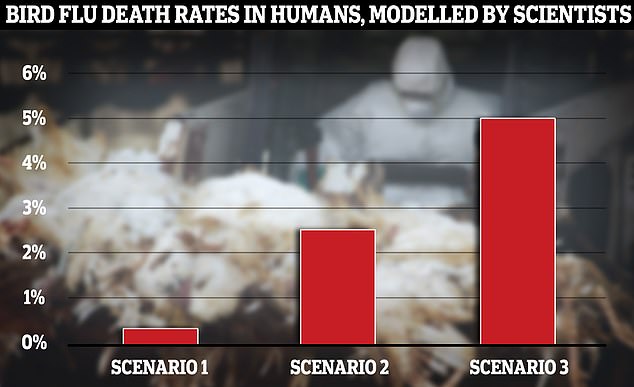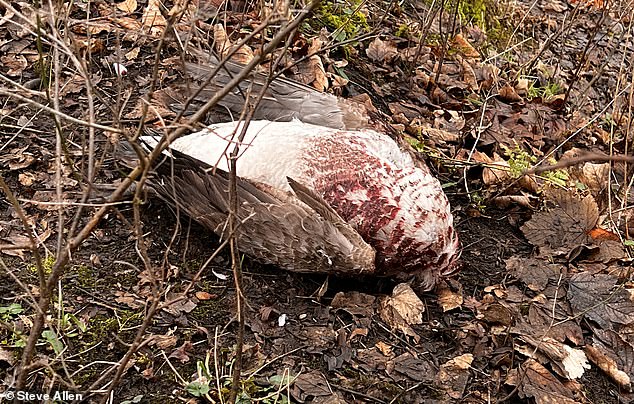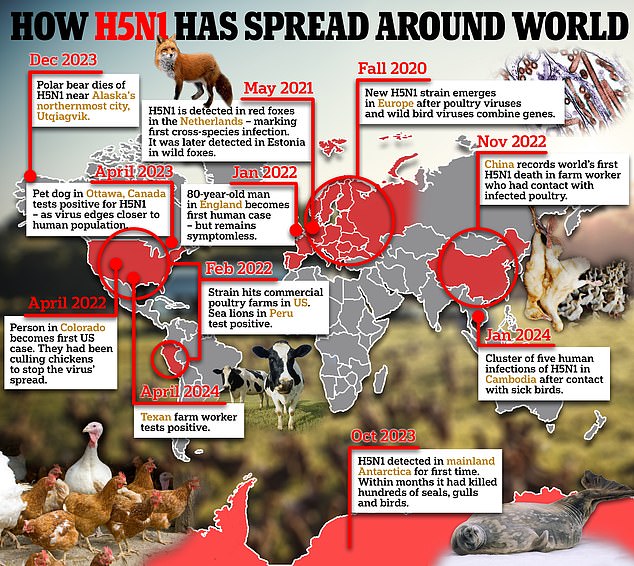The growing spread of bird flu to humans is a “huge concern”, the World Health Organization has warned.
The virus, an extremely deadly H5N1 subtype, has caused a devastating decline in bird populations after its emergence in Europe in 2020.
It has since jumped to mammals such as cows, cats, seals and now people, increasing the risk of the virus mutating and becoming more transmissible.
While there is no evidence of human-to-human transmission, scientists have warned it would be significantly deadlier than Covid.
World Health Organization experts said the human strain faces an “extraordinarily high” mortality rate if it became established, currently killing more than half of those infected. Jeremy Farrar (pictured), chief scientist at the UN health agency, said: “I think this is still a huge concern.”

UK scientists tasked with developing “early human transmission scenarios” for bird flu have warned that 5 per cent of infected people could die if the virus spreads among humans (as shown in scenario three). In another scenario, scientists assumed that 1 percent of those infected would be hospitalized and 0.25 percent would die, similar to how deadly Covid was in the fall of 2021 (scenario one). In the other, a mortality rate of 2.5 percent was recorded (scenario two).

According to the UKHSA, more than 700 confirmed cases of H5N1 have been detected among wild birds in England since September 2022. Pictured above, an outbreak of bird flu last February in Queens Park, Heywood, Rochdale.
WHO experts said humans faced an “extraordinarily high” mortality rate if the strain became established, currently killing more than half of those infected.
Jeremy Farrar, chief scientist at the UN health agency, said: “I think this remains a huge concern.”
Describing it as “a global zoonotic animal pandemic”, the former SAGE adviser told reporters: “The big concern, of course, is that by… infecting ducks and chickens and then increasingly mammals, that virus now evolves and develops the ability to infect humans.” and then, critically, the ability to move from one human being to another.’
He added: “When you get into the mammal population, you get closer to humans… this virus is just looking for new and novel hosts.”
“It’s a real concern.”
There is so far no evidence that the virus, responsible for the deaths of tens of millions of poultry and wild birds, is spreading between humans.
But its evolution to infect more species is what worries scientists the most.
In the hundreds of cases where humans have been infected through contact with animals, “the mortality rate is extraordinarily high”, Sir Jeremy said.
Official data shows that between 2003 and April 1, 2024, 463 deaths out of 889 human cases were recorded in 23 countries. This puts the case fatality rate at 52 percent.
US authorities said earlier this month that a person in Texas was recovering from bird flu after being exposed to dairy cattle.
It was only the second case of a human testing positive for bird flu in the country and came after the virus sickened flocks apparently exposed to wild birds in Texas, Kansas and other states.

It also appears to have been the first human infection with the influenza A virus strain through contact with an infected mammal, the WHO said.
Sir Jeremy Farrar said greater surveillance is needed to understand how human infections occur, “because that is where adaptation (of the virus) will occur”.
“It’s tragic, but if I get infected with H5N1 and die, it’s all over.” “If I go around the community and pass it on to someone else, then the cycle begins.”
A report from the Rare Breeds Survival Trust (RBST) warned this week that all native breeds of chicken, duck, geese and turkey in the UK are under threat due to bird flu.
Efforts are underway to develop vaccines and therapies for H5N1 in case the situation worsens.
But Sir Jeremy stressed that regional and national health authorities globally need capacity to diagnose the virus to ensure the world is “in a position to respond immediately”.

